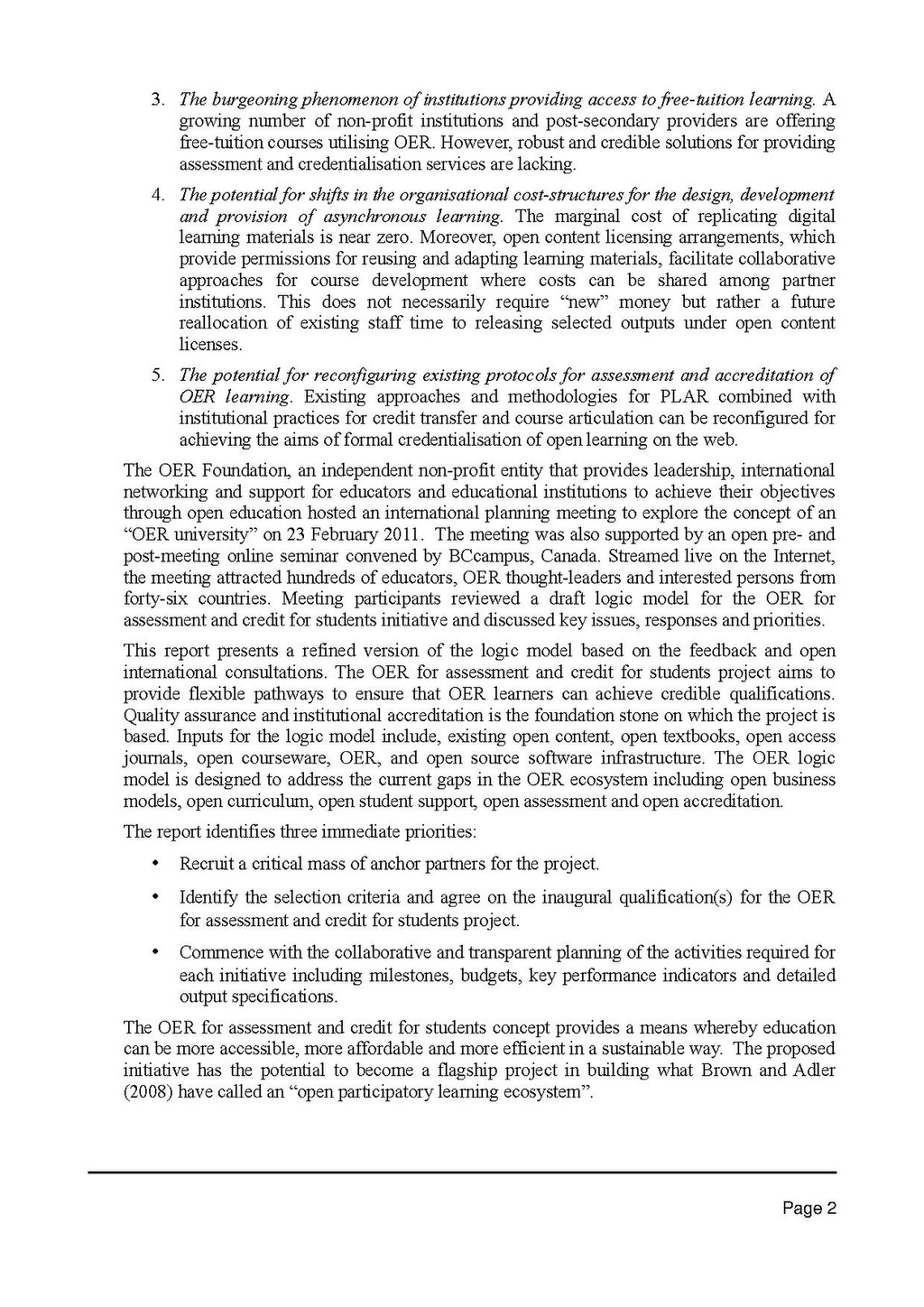- The burgeoning phenomenon of institutions providing access to free-tuition learning. A growing number of non-profit institutions and post-secondary providers are offering free-tuition courses utilising OER. However, robust and credible solutions for providing assessment and credentialisation services are lacking.
- The potential for shifts in the organisational cost-structures for the design, development and provision of asynchronous learning. The marginal cost of replicating digital learning materials is near zero. Moreover, open content licensing arrangements, which provide permissions for reusing and adapting learning materials, facilitate collaborative approaches for course development where costs can be shared among partner institutions. This does not necessarily require "new" money but rather a future reallocation of existing staff time to releasing selected outputs under open content licenses.
- The potential for reconfiguring existing protocols for assessment and accreditation of OER learning. Existing approaches and methodologies for PLAR combined with institutional practices for credit transfer and course articulation can be reconfigured for achieving the aims of formal credentialisation of open learning on the web.
The OER Foundation, an independent non-profit entity that provides leadership, international networking and support for educators and educational institutions to achieve their objectives through open education hosted an international planning meeting to explore the concept of an "OER university" on 23 February 2011. The meeting was also supported by an open pre- and post-meeting online seminar convened by BCcampus, Canada. Streamed live on the Internet, the meeting attracted hundreds of educators, OER thought-leaders and interested persons from forty-six countries. Meeting participants reviewed a draft logic model for the OER for assessment and credit for students initiative and discussed key issues, responses and priorities.
This report presents a refined version of the logic model based on the feedback and open international consultations. The OER for assessment and credit for students project aims to provide flexible pathways to ensure that OER learners can achieve credible qualifications. Quality assurance and institutional accreditation is the foundation stone on which the project is based. Inputs for the logic model include, existing open content, open textbooks, open access journals, open courseware, OER, and open source software infrastructure. The OER logic model is designed to address the current gaps in the OER ecosystem including open business models, open curriculum, open student support, open assessment and open accreditation. The report identifies three immediate priorities:
- Recruit a critical mass of anchor partners for the project.
- Identify the selection criteria and agree on the inaugural qualification(s) for the OER for assessment and credit for students project.
- Commence with the collaborative and transparent planning of the activities required for each initiative including milestones, budgets, key performance indicators and detailed output specifications.
The OER for assessment and credit for students concept provides a means whereby education can be more accessible, more affordable and more efficient in a sustainable way. The proposed initiative has the potential to become a flagship project in building what Brown and Adler (2008) have called an "open participatory learning ecosystem".
